Note: This website was automatically translated, so some terms or nuances may not be completely accurate.
Measuring Newspaper Ad Effectiveness: This Far! Nikkei and Dentsu Inc.

Wataru Murayama
Nikkei Inc.

Hiroshi Kigawa
Dentsu Inc.
Nikkei Inc. (hereinafter referred to as Nikkei) has been promoting the digital transformation (DX) of newspaper advertising since 2018, when it announced its " Newspaper Advertising IoT Declaration."
One initiative is the "Paper Viewer" service, which allows paid digital subscribers or those who purchase the newspaper using Nikkei ID payment to view the actual Nikkei paper edition directly on PCs, tablets, and smartphones.
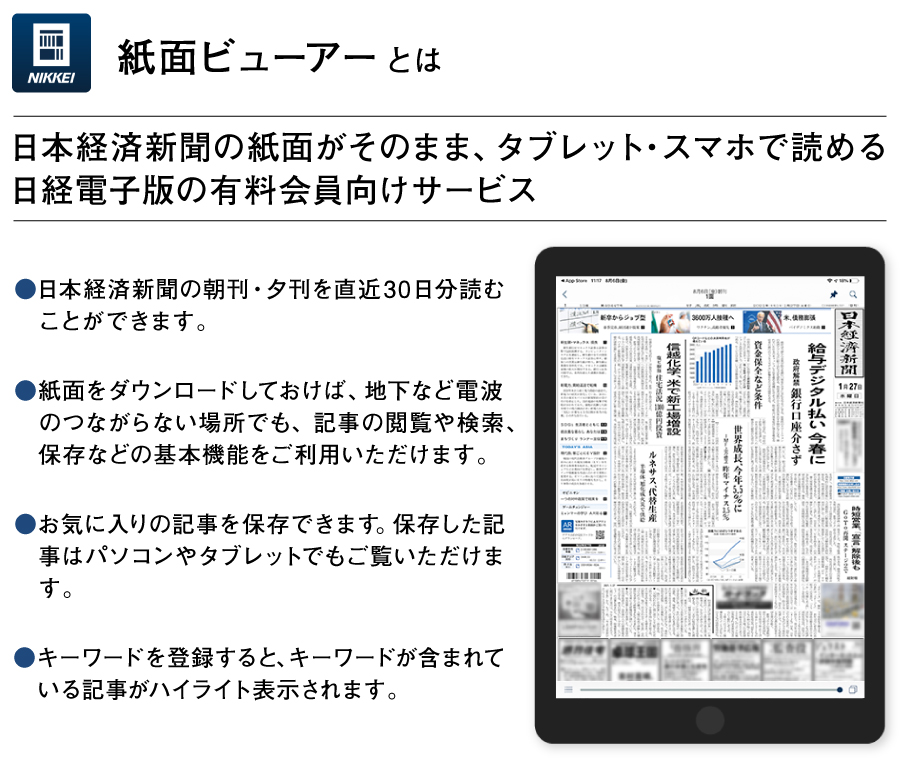
From an advertiser's perspective, a major advantage of this Page Viewer is that it enables "log-based measurement of newspaper ad effectiveness at the same level as digital ads," which was previously difficult.
This time, while introducing a Proof of Concept (PoC) conducted by Nikkei and Dentsu Inc. to further advance effectiveness measurement, Wataru Murayama of Nikkei Inc. and Hiroshi Kigawa of Dentsu Inc. discuss the role and potential of newspaper advertising in the DX era.
<Table of Contents>
▼Measuring Effectiveness with B2B Series Ads: A PoC Focused on Target Reader Granularity
▼310,000 Month ly Active Users : The Value of the "Paper Viewer" Beyond the Digital Edition
▼Adding "Data" to the Value of Newspapers! Chall enging New Marketing Methods
Measuring Effectiveness with B2B Series Advertising. PoC Focused on Target Reader "Granularity"
Kigawa: This year, Nikkei and Dentsu Inc. conducted a joint PoC measuring newspaper ad effectiveness using the "Nikkei Newspaper Page Viewer."
Over a two-month period, we published four series ads related to SoftBank's DX Support Services for Corporate Business Division in the Nikkei.
We meticulously analyzed user viewing behavior for these ads using the "Paper Viewer." What we particularly focused on this time was the "granularity" of the target audience.
Each ad targeted a different industry, such as insurance or transportation. We meticulously verified which readers—based on industry, company size, position, and job type—paid attention to the content of each ad.
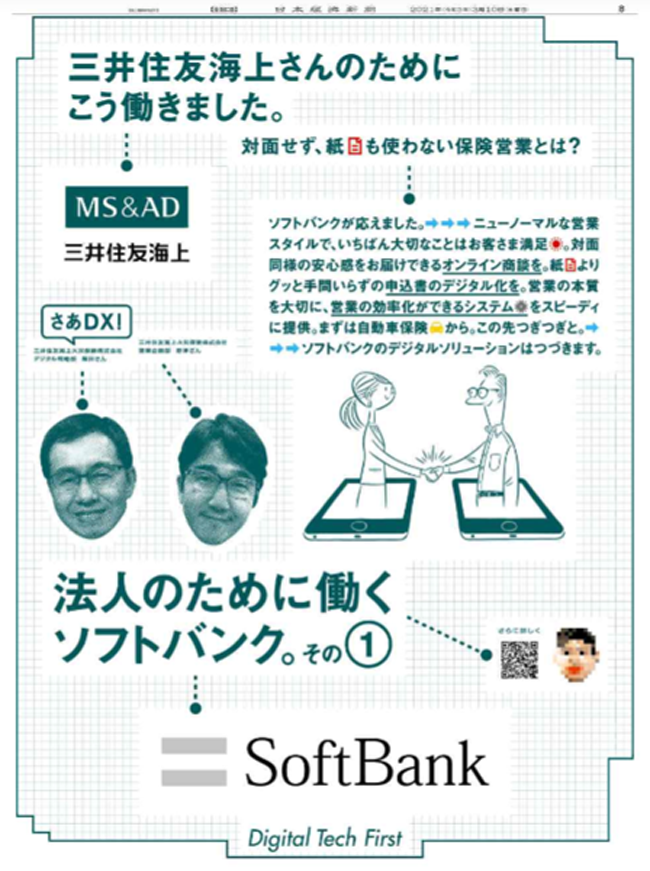

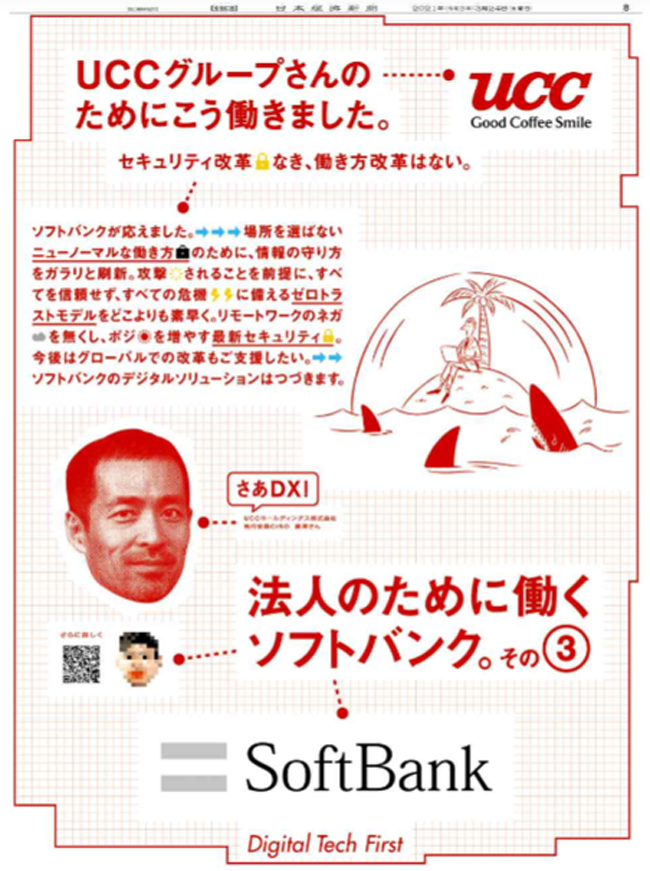
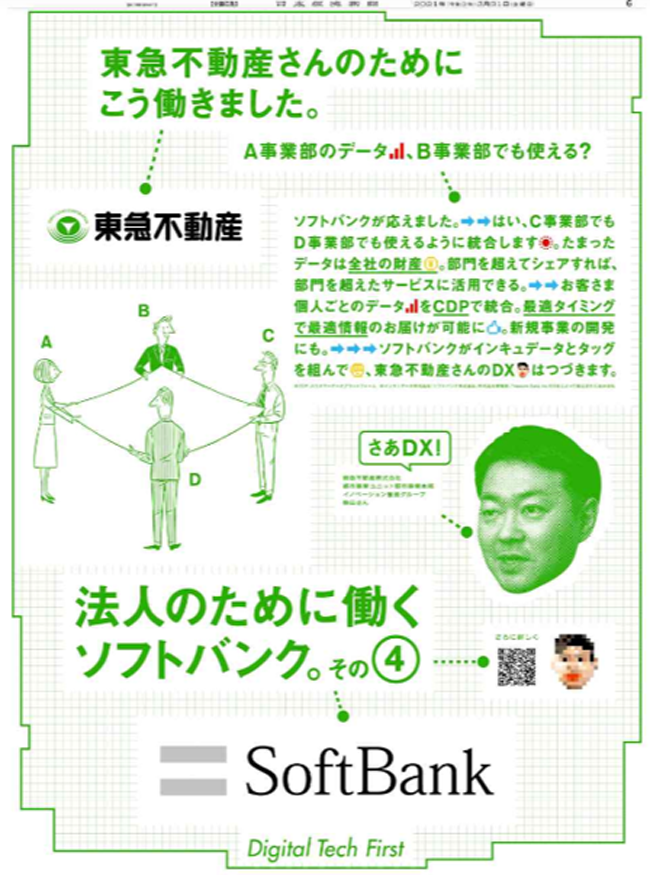
Kigawa: The analysis revealed that even within the same ad series format, the business attributes of readers who paid particular attention varied significantly depending on the specific appeal of each ad. Since this was log-based analysis, the verification period was vastly shorter than traditional asking surveys, earning high praise from the client. We believe this has significantly opened up new possibilities for newspaper ad effectiveness measurement.
Murayama: Nikkei has been measuring newspaper ad effectiveness using the Page Viewer since 2018. Analyzing the vast data from all ads published over these three years has revealed many insights. At the same time, we wanted to challenge ourselves with a more advanced initiative to utilize this data more effectively, which led to this PoC with Dentsu Inc.
Kigawa: Regarding the PoC results, our client SoftBank particularly valued two perspectives. One was the granularity of the target audience, as mentioned earlier. For example, in an ad introducing SoftBank's "online meeting tool" implementation case, we discovered that female sales professionals were especially engaged with the ad. The differences in ad responses across segments were strikingly evident, and we were frankly surprised to see such clear numerical results.
The other was ad viewing time. For instance, an ad introducing DX implementation cases in the transportation industry revealed that "one in four readers employed in transportation-related jobs viewed the ad intently for over 10 seconds." We also received the welcome comment: "It's reassuring to know the ads are truly reaching the people we want to reach."
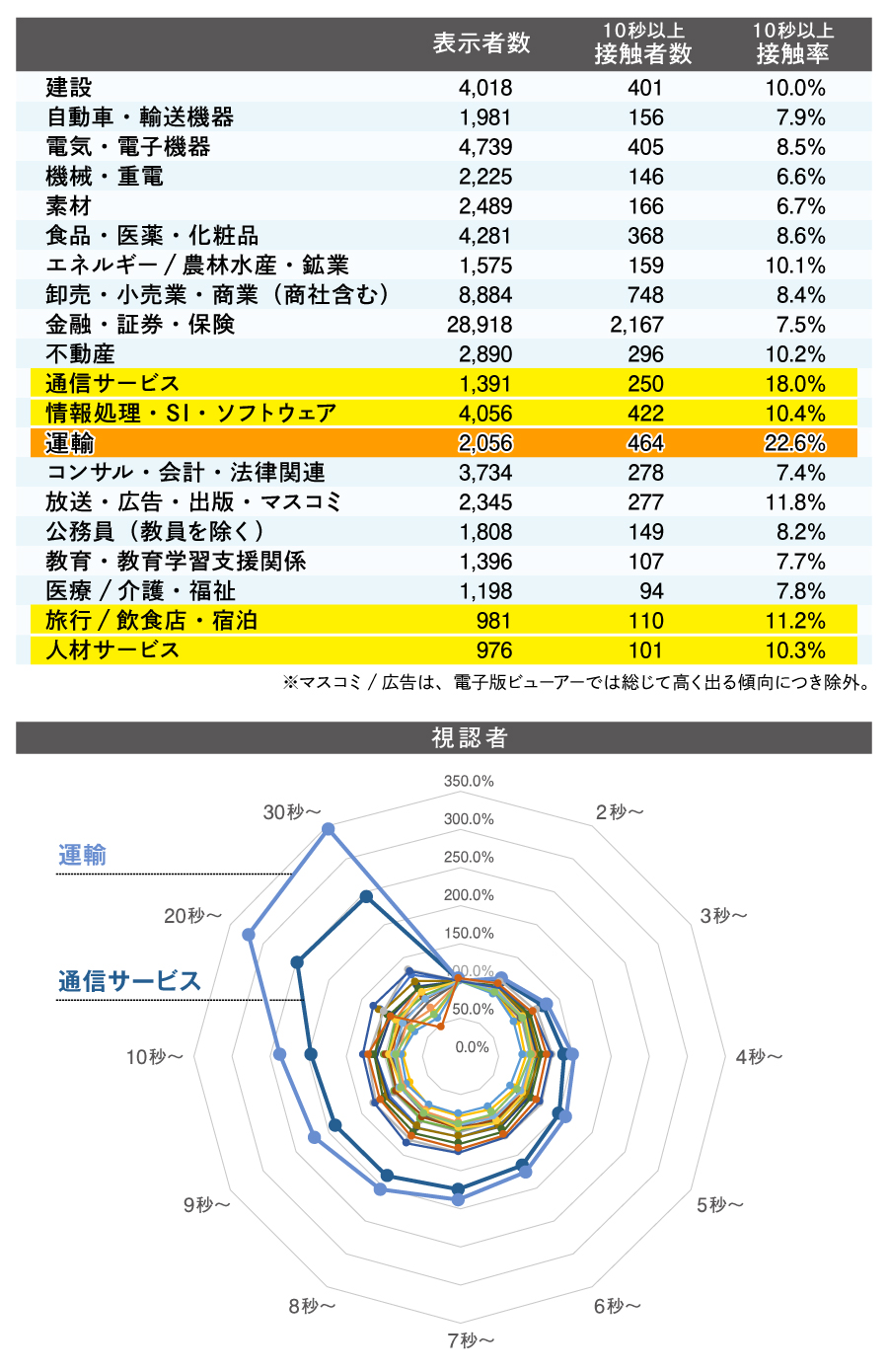 Murayama: By leveraging the expertise of Dentsu Inc. to objectively evaluate the value of our data, we were able to reaffirm the significant potential of the print viewer.
Murayama: By leveraging the expertise of Dentsu Inc. to objectively evaluate the value of our data, we were able to reaffirm the significant potential of the print viewer.
Kigawa: In recent years, marketing needs in the B2B sector have surged, and more companies are conducting highly targeted, granular marketing activities. The Nikkei ID data, arguably Japan's largest in both volume and quality for business professionals, holds tremendous potential to deliver new marketing value precisely to such clients.
Murayama: Not just newspapers, but mass media in general tends to be perceived primarily by its "overall volume," such as readership numbers. Through this PoC, I believe we were able to reaffirm that it is a collective entity formed by the convergence of various attributes.
310,000 monthly active users. The value of the "Paper Viewer," distinct from the digital edition.
Kigawa: Moving forward, let's discuss the Paper Viewer service itself. What challenges prompted its launch?
Murayama: In 2018, Nikkei announced its "Newspaper Advertising IoT Declaration," aiming to add new value to analog print newspaper advertising using digital technology. This stemmed from a sense of crisis as a newspaper publisher.
Amid such remarkable technological advancement, newspapers remained a standalone medium without online connectivity, and the public's perception of newspaper advertising had declined. A "newspaper rebranding" was necessary.
We believe in the value of the paper newspaper, but at the same time, pursuing advertising methods that provide information in ways suited to the times and measure effectiveness is essential. We decided to drive the reform of the "newspaper" using an approach distinct from the digital edition. One initiative was the Page Viewer.
Kigawa: What led to the decision within the company to release the Page Viewer?
Murayama: Since launching the Nikkei Digital Edition in 2010, we've had many members subscribe to the digital edition. However, we received numerous requests from digital subscribers saying, "We want to read articles in the traditional paper layout." So, we launched the Paper Edition Viewer, accessible only to paid digital subscribers (and those who subscribe to the newspaper using Nikkei ID payment). This allows users to view articles in the paper layout on PCs, smartphones, and tablets.
Kigawa: Could you tell us about the features of the Print Layout Viewer and its active user numbers?
Murayama: The monthly active users for the Page Viewer are approximately 310,000. Since we have about 810,000 paid digital edition subscribers, this means about 38% of those members are using the Page Viewer (as of July 2021).
Kigawa: 310,000 is quite a large number. It's surprising that the pages of a traditional newspaper media outlet, rather than the digital edition, are being read so extensively on digital devices. Do you anticipate the user base continuing to grow?
Murayama: User numbers are steadily increasing, and many members are switching from print to the Paper Viewer. However, we are not actively pursuing growth in Paper Viewer users. We believe it's important to offer choices based on reader preferences: those who prefer print, those who read the digital edition on a computer, those who read it via the app, and those who read it through the Paper Viewer.
Kigawa: Compared to the print newspaper, I believe the major unique features of ads on the Page Viewer are the "Page Viewer Link" and "ad effectiveness measurement." Even if the ad layout itself is identical to the print newspaper, clicking or tapping it allows users to navigate directly to the company's landing page. Regarding effectiveness measurement, we can determine "which users stopped to look at a specific ad and for how long." The latter measurement capability, in particular, is a groundbreaking feature, isn't it?
Murayama: The Nikkei Group's web media share a common "Nikkei ID," and paid digital edition subscribers must have one. We quantify newspaper ad effectiveness by analyzing logs from this Nikkei ID and the paper viewer.
Specifically, we categorize ad viewers by "gender/age," "occupation/position," "household income," etc. Based on metrics like ad impressions and viewing time, we visualize "who saw the ad, how much they saw it, and how they saw it." This PoC, with the collaboration of Dentsu Inc. and expertise in data analysis, was an attempt to see if we could achieve even finer granularity.
Adding "Data" to the Value of Newspapers! Challenging New Marketing Methods
Kigawa: From a media planner's perspective like mine, I see the potential of the page viewer in how it "faithfully recreates the value of the print newspaper as much as possible in a digital format."
Unlike TVer or radiko, the "digital newspaper" and the "traditional print newspaper" have completely different formats and advertising structures. This created the challenge that "insights gained from analyzing the advertising effectiveness of the digital edition couldn't be applied back to marketing the print newspaper." We believe this is why newspaper advertising effectiveness measurement has lagged significantly behind other mass media.
Murayama: I agree. While traditional newspaper layouts had certain needs and value, the persistent challenge of "being unable to quantify reader viewing behavior or advertising effectiveness" remained unresolved by the "digital edition." With the paper viewer enabling us to add data to the value of newspaper layouts, I believe we've finally found a way to meet client demands.
Kigawa: In that regard, we advertising agencies also want to further evolve the unique value of newspaper advertising creative, exemplified by the "15-column ad" developed over our long history.
Today, creativity demands more than just subjective judgment; it requires data-driven validation. For instance, it could be interesting to explore a collaborative model where Nikkei Inc. marketers and our creators work together to develop ads based on data from the page viewer.
Murayama: There seem to be many challenges we can take on. In recent years, campaigns integrated across media like TV and digital have become mainstream, rather than campaigns relying solely on newspapers. Going forward, we want to research and develop "optimized media planning" tailored to client needs – exploring synergies with other media and determining the most effective timing for newspaper ads.
Kigawa: There's also significant potential for more precise marketing initiatives by linking Nikkei's first-party data, "Nikkei ID," with Dentsu Inc.'s proprietary consumer database, "People Driven DMP."
Murayama: It would be great if we could collaborate on that in the future. For our part, we want to embrace newspapers—a medium increasingly seen as unique in today's climate—positively and evolve the approaches only newspapers can deliver.
Kigawa: Let's develop marketing approaches that resonate with business professionals and deliver value to both our clients and readers. Looking forward to continuing our collaboration!
Was this article helpful?
Newsletter registration is here
We select and publish important news every day
For inquiries about this article
Author

Wataru Murayama
Nikkei Inc.
Media Business Advertising Communication Unit
Director, Advertising IoT Promotion Department
Developed newspaper advertising effectiveness measurement and reader analysis methods using paper viewer data and Nikkei ID, driving data-driven newspaper initiatives. Also managed various digital projects such as Nikkei AR and Nikkei VR, undertaking efforts to enhance newspaper value. The "Newspaper Advertising IoT Declaration" received the 2019 Newspaper Association Award.

Hiroshi Kigawa
Dentsu Inc.
Third Integrated Solutions Bureau
Senior Solutions Planner
In addition to planning across all media domains, we handle business strategy proposals centered on market and target analysis, as well as providing solutions that leverage media companies' assets and content. We specialize in data-oriented planning utilizing marketing methods such as People Driven DMP.

